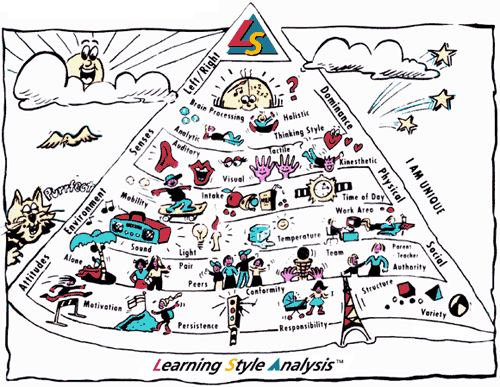Friedemann Schaub, MD, PhD, is a physician specializing in cardiology and molecular biologist who has helped thousands of people to overcome fear and anxiety with his breakthrough and empowerment program. We're privileged to have him in the virtual studio with us today.
Dr Schaub, please tell us what led you to find the solution to fear and anxiety.
As a physician and molecular-biologist I became increasingly fascinated by our natural healing potential. Every single cell in our body has sheer unlimited abilities to change, adapt and heal. But how can we consciously access and leverage this force to promote health and accelerate the healing process? One of the keys are our emotions. Studies have shown that positive emotions can boost the immune system, decrease diabetes, and improve heart conditions. On the other hand, negative emotions, such as stress, anxiety, and depression, have the opposite effects and can cause serious health problems.
The problem is that we usually interpret negative emotions such as fear and anxiety, as flaws and weaknesses that need to be overcome, managed, or suppressed, rather than trying to understand their deeper meaning. Consequently “negative” emotions don’t get adequately addressed; instead, they accumulate in our subconscious and eventually cause greater emotional and physical challenges. In other words, the real problem is that we don’t know how to listen or relate to our emotions, let alone consciously guide and work with it. This is why it is so important to learn how to consciously work with the source of our emotions – our subconscious mind.
Yes, I can see that. How does it work, in a nutshell?
The Fear and Anxiety Solution approaches these emotions not as flaws or disorders, but instead guides you to transform these strong forces into powerful allies, messengers, and healing catalysts that lead to greater confidence, self-worth, and wholeness.
The book offers a step-by-step program to discover and address the meaning and subconscious root causes of fear and anxiety and gain a deeper understanding of who you truly are. There are three subconscious root causes of fear and anxiety: inner conflicts, stored emotions, and self-limiting beliefs. To become free of the symptoms of fear and anxiety and to shift into an awareness of emotional freedom, all three root causes need to be addressed.
However, releasing the root causes fear and anxiety in and of itself isn’t cannot create permanent change. Once you have been able to create a clean-slate on the subconscious level, the book guides you through processes, which allow you to replace you old anxiety-driven identity with a new empowered foundation of self at the subconscious and cellular level.
That makes a lot of sense. Please can we have an excerpt from the book?
From Is Anxiety a Biochemical Problem Requiring a Biochemical Solution?
….”I like to look at anti anxiety drugs as a form of emotional painkiller. The purpose of pain medication is not to mend the fracture or close the wound that causes the pain, but to make the time it takes to heal more tolerable. It would be denial or plain ignorance if you would drown out the pain without tending to its root causes. If fear and anxiety are like physical pain, then their natural purpose must be to call your attention to the deeper emotional and mental wounds they are caused by. What if tending to these inner wounds—whether they are unresolved traumas, self-sabotaging patterns, or limiting beliefs—could lead to greater peace, wholeness, and self-empowerment? Would it still be enough for you to just fix and get rid of fear and anxiety? Or would you want to take advantage of their true meaning, heal yourself from the inside out, and gain access to your true potential? This is what I call the healing power of fear and anxiety……..
Or From The Purpose of Emotions?
Generally speaking, our modern society has little room and patience for feelings. Reason and logic are far more accepted and valued than sensitivity and emotions. However, we need emotions for guidance and to bring meaning to our lives. They provide us with important information about our likes and dislikes, our strengths and weaknesses, and the value of our actions and choices. Every day, emotions have a significantly larger impact than facts and reasoning on the choices we make and how we experience our world. Isn’t it true that the moments we remember and cherish the most are those we associate with the strongest feelings?......
……The natural reaction to so-called negative emotions such as fear and anxiety is to try to get rid of them quickly because they feel uncomfortable and disempowering. But true healing is not about fixing or getting rid of a problem. Healing is about remembering and reinstating our wholeness. In this sense, negative emotions provide us with the opportunity to find and regain our wholeness. When we discover and understand their deeper meaning, they become powerful catalysts that lead us to our greater, self-empowered, authentic selves. After all, if fear and anxiety didn’t have an important function, wouldn’t evolution have eliminated them by now?
Thank you, Dr Schaub.
NOTE - Dr Friedemann Schaub shares information that is beneficial for you and your loved ones, in The Fear and Anxiety Solution. His says that people who read this book and implement the step by step program – will find a difference in their lives by the time they reach the end of the book. For more details about The Fear and Anxiety Solution, visit the tour page - http://bookpromotionservices.com/2012/10/03/fear-anxiety-solution-tour and Dr Schaub’s website www.thefearandanxietysolution.com.






